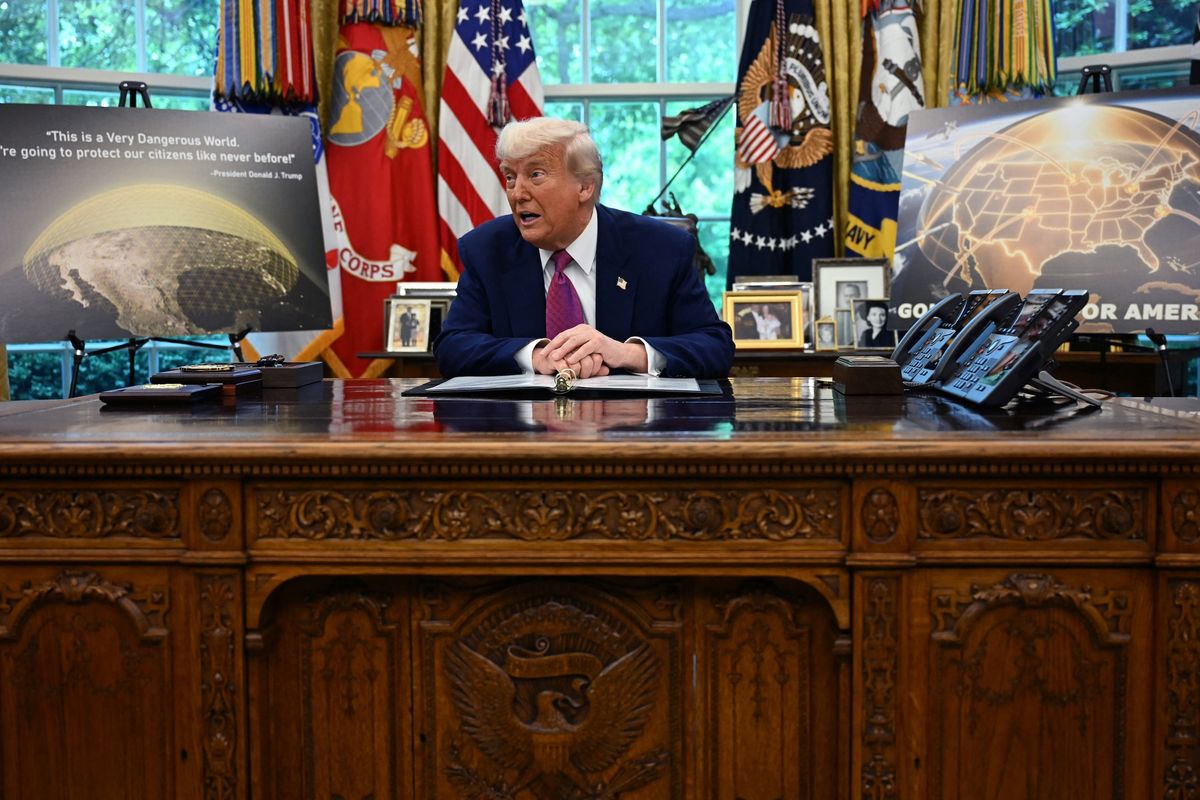Peter W. Singer is a Strategist and Senior Fellow at New America and an editor at Popular Science magazine. Singer is considered one of the world’s leading experts on changes in 21st century warfare and is a co-author of Ghost Fleet: A Novel of the Next World War.
The Cipher Brief caught up with Singer to talk about the future of drone technology and what it means for how the U.S. goes to war.
The Cipher Brief: What’s your assessment of the overall threat that the U.S. and its allies are facing today from drones and how the U.S. has or has not stayed ahead of it?
Singer: Unfortunately, this is a lot like what played out with IEDs. Where there was very clear evidence of a growing threat. We had years and years to prepare for it. Then we were surprised, and ad hocked our response. That's what played out with unmanned aerial systems, where the trends have been self-evident for well over a decade in terms of greater state and non -state capability and use. When people say, ‘Oh my goodness they are being deployed in Yemen’, well they've been deployed in Lebanon for well over a decade. You didn't think it was going to move over there? Similarly, they were being used in Syria before we put troops on the ground. Then we're surprised that they're used against us and our allies.
It's a technology with an inherently low barrier to entry. Which means that both states of all types and non-state actors can fairly easily gain this capability. Either by building it on its own, either off the open market or being provided by some other actor out there. The skillset to use them, again, is not something that takes years upon years to build up that capability, particularly when you're talking on the lower end, the smaller ones. Also, the technology itself takes away some of the deeper training requirements. We're not talking about needing multiple decades to put together an air force to gain this small modicum of air strike capability.
Another thing that's interesting about this, and it’s a little bit of a parallel to the strikes into Saudi Arabia, is about a month, maybe two months ago, I had a White paper that came out that looked at what was changing in insurgency and counter insurgency relative to new technology. One of the points that it made was that these intervening forces no longer will be able to enjoy the protection of distance. That is, the insurgents on the ground are going to be able to reach out and touch the homeland of an intervening force in a way they couldn't have done in the past. That's true whether you're talking about growing missile capabilities, growing drone capabilities or growing cyber capabilities. And you can see the Saudis experiencing this, right? They intervene into Yemen and then they're stunned by the fact that Houthis are able to reach in and they're reaching their airports, they're reaching their port facilities. This is not how intervening forces thought it was going to play out for them in the past. Similarly, the U.S. has to think about this in terms of cyber capabilities. You could reach into another continent, but it doesn't mean that actor on the ground can't reach back and touch you. This is one of the ripple effects of this technology.
The Cipher Brief: What about the U.S.'s strategy for drone defense? We've seen the military put concerted efforts on procurement via DARPA and other efforts that are trying to facilitate competition around drone defense and anti-drone technology. Where are we on that front?
Singer: It's certainly better than it was several years back but it's still mixed. Pointing to the ad hoc nature of it at the origin point was literally the fact that we handed it over to the team that was in charge of counter IED work, which was a also a bit of an ad hoc response to the technology threat that had been around for literally multiple generations.
We're certainly better than we were several years back when they were rushing out different test programs. I think the issue now is, it's a balancing of deploying capabilities to all the relevant areas of need. We've seen, to put it bluntly, that some units have this capability, and some don't. One of the challenges is not just developing a response but a response that doesn't cost us into oblivion. It's a little bit equivalent to what the Israelis are running into with their counter rocket and missile work. Someone is shooting a hundred-dollar system at you and you are responding with a hundred-thousand-dollar system. Even if you get a hit, it's still not a true win. That's what we're wrestling with in this space and that’s why we’re seeing interest in the non-kinetic solutions because the belief is that they may be able to flip the cost equation.
The Cipher Brief: What should we be thinking about as we look to the future of drone use and technological advancement?
Singer: I talk about this often with military audiences, how we need to widen our concept of the systems beyond how the U.S. initially used them and envisioned them. To put it in broader terms, essentially you have two future pathways of not just unmanned aerial systems but robotics overall. You have one type that essentially has centralized intelligence and mimics the human task of some kind of manned platform. As a result, they tend to be similar in size, shape, and form as the manned platform that they are replacing. That's been very much our vision of remotely piloted aircraft, unmanned aerial systems, drones, whatever you want to call them. They are very familiar in size, shape, form, to the planes that they're replacing. You can see this very clearly with everything from current platforms like Global Hawk or Reaper to what's looming with MQ-25.
You have though, a second direction which is akin to nature and how insects operate. Each little individual is not all that smart, but together they can perform very complex tasks. It's a form of decentralized intelligence, breaking the task down into smaller parts, with the overall network or swarm able to operate together. Again, we can see that on the civilian side with how, for example you might be doing delivery with a robotic 18-wheeler truck or you might be doing it with a single small drone. It’s the same thing if we're thinking about the military application, whether it's ISR or strike or logistics. You might have these physically large systems, but you might also have a swarm of physically smaller ones. Of course, that opens up entire new visions of everything from how they operate to how you defend against them.
I remember participating in an exercise with the military and them telling me, “The small ones they can't carry enough ammunition to cause any damage to a U.S. Navy ship”. And a group of experts and I were like, ‘Well if each one can carry an explosive form penetrator and I deploy 200 against you and you don't have good air defenses against it, I can take out your electronics systems, your radar, I can cause a significant amount of damage. I may not sink the ship, but I can definitely cause it to have a very, very bad day.” How are you going to defend against this? You better have a plan.
These are two very different directions. It's similar to the big versus small, but it's not just size differences. It also goes to cost differences, at least to how you might have fundamentally different trends for them. With big, multimillion-dollar platforms, you're going to be less risky than you are with a swarm of cheap disposable systems where in fact they're very goal may be to get shot down, which if we look back in history was actually one of the original plans for unmanned systems back in the Vietnam period and then also the Israeli use of them in the early 1980s. Their job was to be seen and be shot down, to force the enemy to reveal the location of their missiles and use up their missiles. We may use robotic systems that way. We're not going to use them that way if they're 60 million dollars, but we might if they're 60 or 600 dollars. Or an adversary might us them that way.
These are two very different directions are what we're going to have to think about in terms of our own acquisition, but also as we're exploring the different potential threats that are out there.
Read also Deadlier Skies: Risks and Benefits of Drone Technology and Who Should Give the Kill Command? In The Cipher Brief…
Join The Cipher Brief March 22-24, 2020 for in-person briefings with a number of Cipher Brief experts on global and national security issues. Request your seat at the table today for The Cipher Brief’s Annual Threat Conference in Sea Island, GA.














